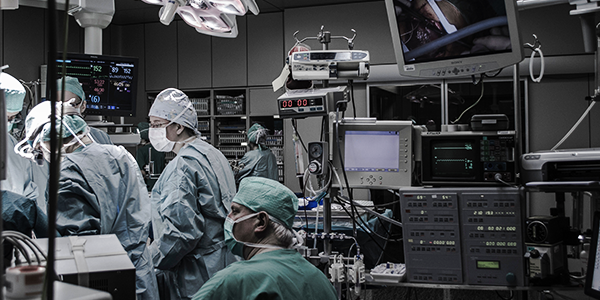As an organization that prides itself on being at the forefront of the advancements in healthcare and technology, we find it in our best interest (and yours!) to discuss some of the ways that technology is going to continue to change healthcare. Our dedication to these innovations spans across Advanced Resources – which is why we’re excited to be one of the sponsors for this year’s “Conversations With Mark Vargas” featuring Mark Cuban at Judson University to engage with other thought leaders in the space.
1. Patient Access to Treatment
With medical technology advances, patients are receiving more advanced care. Alongside increased research that provides medical professionals with the knowledge to better treat illnesses, software development has decreased chances for human error in diagnoses and prescribing medication.
For example, Electronic Health Records (EHR) software is being implemented in numerous hospitals and clinical offices. If a doctor prescribes medicine to his/her patient, the software will provide information as to whether or not the medication is compatible with the medications the patient is currently taking, avoiding any possible negative interactions. EHR software is also a more efficient means to treatment than traditional records. According to USF Health, EHR can be very useful during a trip to the emergency room. If a patient is in dire need of care, the hospital can quickly pull up the patient’s medical records and make snap decisions on next steps. Traditional medical records waste time in reviewing mounds of paperwork to decide on the best care for the patient.

2. Leveraging Mobile Apps in Medicine
At the moment, there are more than 300 thousand mobile health apps available and more than 200 are added each day. Most consumers in the U.S. can’t go anywhere without their smartphone. With everything at the tip of our fingers, why shouldn’t our physicians be? Mobile technology will continue to drive the connecting force between patients and doctors. Many hospitals are already implementing ways in which consumers can email or send a message to their doctors through a portal, requesting more information on their symptoms, blood work, etc.
“Telehealth” has become very popular among mobile users. If patients are experiencing symptoms of a cold or a chronic health condition, they can live chat with a doctor through an app who can walk through their situation and prescribe medicine without the patient ever having to visit a doctor’s office. So, what’s next? There’s always the possibility that we eventually won’t need to even go to the doctor’s office at all – we’ll just have Skype / FaceTime sessions with doctors who can examine us through a video call.
3. Improving Control Over Diseases
According to the University of Illinois at Chicago, the World Health Organization hosts a database with over 14 thousand codes that translate into diseases and illnesses. With a database of this size, medical professionals are able to quickly track and retain valuable information about ways to help fight these diseases. The ability to leverage databases and software that makes doctors’ jobs more efficient provides patients with better and more accurate healthcare experiences.
And with the ability to accurately track diseases and illnesses, doctors can better treat their patients – with the right medicine and the right care.
4. Health Trackers
Health trackers are becoming a must-have instead of a want, with FitBit leading the charge in innovations. These health wearables are worn like a bracelet or watch and track physical exercise, heart rate, sleep quality, and more. These devices provide patients with the opportunity to track their health on their own outside of a visit to the doctor. It can also help catch health issues far in advance. A patient may be sleeping poorly and wouldn’t know unless they wear their health tracker to sleep. This could warrant a visit due to sleep apnea, sleep insomnia, etc. Additionally, a patient might notice that their resting heart rate is too slow or too fast – something that can be treated and addressed before a physical that only happens once a year, at most.
5. Robotics
Robotics will continue to be one of the fastest-advancing medical technology innovations. Robotics have made huge strides in recent years, and they will continue to prove beneficial for those undergoing rehabilitation.
According to the Medical Futurist, robotics can help a paralyzed patient walk again. They can help patients who’ve lost a limb feel motion again. And – they can help a nurse lift an elderly patient that wouldn’t have been feasible without the help of technology. Aside from the advanced robotic technology, certain robotics can act as an “Alexa” or “Siri” to help patients remember to take their medicine, change their gauze, etc.
To learn more about the integration of healthcare and technology, contact our team or join us at “Conversations With Mark Vargas.”



